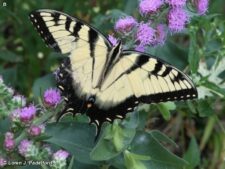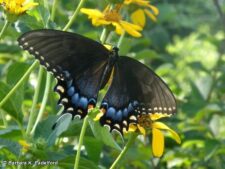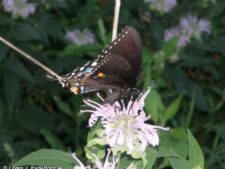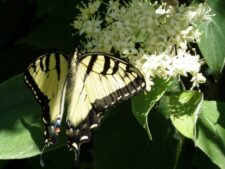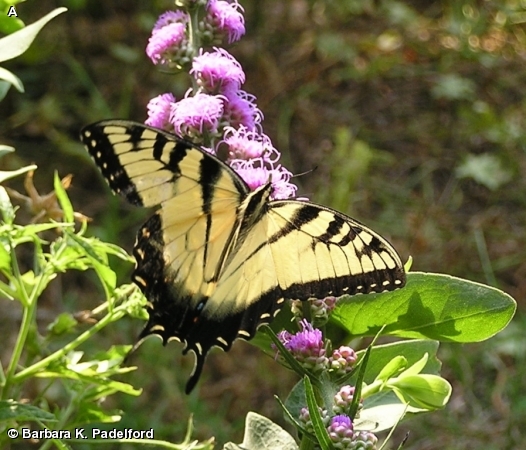
This butterfly has a 4 – 5 inch wingspan. It is yellow with black “tiger stripes.” There is black edging around the trailing edge of the wings with yellow spots along the outer edges. There is a long black tail on each hindwing. Dorsally, the spring form of the male has a few blue spots and a central orange spot at the end of the hindwings. The summer form male has no blue spots or very small blue spots. The female has a row of blue spots with a central orange spot on the end of the hindwings dorsally. Ventrally, there can be several orange spots around the edges. Females also can be all black with a large blue area on the hindwings. The shadow of the tiger stripes usually shows through the wings of the black female form. The black form apparently mimics the distasteful Pipevine Swallowtail which is a more southern species. In the first 3 instars, the caterpillars are brown and white and resemble bird droppings. In the 4th instar, the caterpillar becomes green. Just before it pupates it turns brown. When mature, it is about 2 inches in length. A pair of false yellow, blue and black eyespots sits on top of the 3rd thoracic segment. There is a yellow transverse band on the trailing edge of the 1st abdominal segment that is concealed when the caterpillar is at rest.
This common butterfly can be seen in spring and summer nectaring on flowers. They also can be seen singly or in groups around mud puddles obtaining minerals from the wet soil.
The larval foodplants are leaves of a variety of trees and shrubs, including cottonwood, willow, ash and cherry.
Disclaimer: The content of NatureSearch is provided by dedicated volunteer Naturalists of Fontenelle Forest who strive to provide the most accurate information available. Contributors of the images retain their copyrights. The point of contact for this page is: Babs Padelford.

